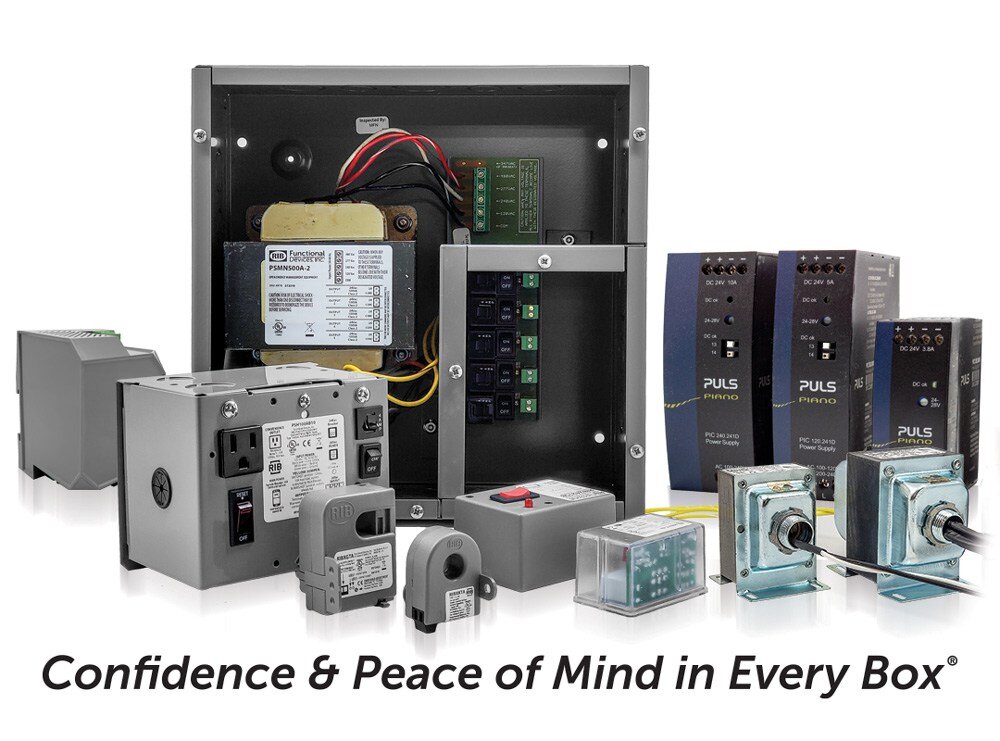
Choosing the right relay for your project doesn’t have to feel like navigating a complex flight plan. While "pilot duty" may sound like something related to flying, it actually refers to a specific type of electrical load rating important for safely controlling inductive devices like solenoids, contactors, and relay coils. In this final post of our "What Is This Contact Rating?" series, we’re taking a closer look at pilot duty ratings—what they mean, when they matter, and how to choose the right relay for your application.
So, does a pilot duty rating have anything to do with flying a plane? No, not at all. However, like we trust a pilot of a plane to steer the aircraft safely through the skies, we also place trust in pilot duty relays that control electrical operations within a building.
Answers at a Glance
Q: What does "pilot duty" refer to?
A: A pilot duty rating refers to a relay’s ability to handle inductive electrical loads.
Q: What types of loads require a relay with a pilot duty rating?
A: Inductive loads like relay coils, contactor coils, and solenoids typically fall under pilot duty ratings.
Q: Should I size my relay based on holding VA or in-rush VA?
A: Always size your relay based on the in-rush VA, which is the higher value, to ensure safe and reliable operation.
Q: Is it okay to double-check relay compatibility with the load manufacturer?
A: Absolutely—it’s always wise to confirm with the load’s manufacturer or consult technical support for specific recommendations.
Q: Where can I find pilot duty ratings for RIB® relays?
A: Pilot duty ratings are listed on product datasheets for various RIB® models, including their amperage and voltage capacities.
Pilot Duty Loads
What kinds of loads fall into the pilot duty rating? Inductive loads, which could include relay coils, contactor coils, or solenoids. That is why you will see an amount of "VA" for the pilot duty ratings, like a transformer or power supply would be rated. One may see a solenoid assigned a couple VA numbers: "in-rush VA" and "holding VA." For sizing a relay to the pilot duty load, I would suggest going by the in-rush number (the larger number, typically) to cover all bases. However, it may be an even better idea to contact the manufacturer of that pilot duty load to see if they have a specific relay suggestion.
For example, you have a 120Vac solenoid that says, "Holding VA: 10VA" and "In-rush VA: 80VA." I would say to go by the 80VA rating and find a relay with a 120ac pilot duty rating. Which RIB relay device would I suggest in this example? Since the RIBU1C does not have a 120Vac pilot duty rating, I suggest the RIB2401B relay. Though, the solenoid manufacturer may say that the RIBU1C relay would be enough. Just like getting a diagnosis from a doctor, it never hurts to get a second opinion. I trust that a solenoid maker would know their solenoids.
Pilot Duty Ratings
Below, you will see the pilot duty ratings circled for 10A, 20A, and 30A RIB relay devices we manufacture.

Understanding pilot duty ratings is key to selecting the right relay for your control system—and helps prevent costly mistakes down the line. While this guide offers a practical starting point, it’s always a good idea to check with the load manufacturer or reach out to our tech support team for expert advice. We’re here to help make your next controls project a smooth ride!
About Functional Devices, Inc.

Functional Devices, Inc., located in the United States of America, has been designing and manufacturing quality electronic devices since 1969. Our mission is to enhance lives in buildings and beyond. We do so by designing and manufacturing reliable, high-quality products for the building automation industry. Our suite of product offerings include RIB relays, current sensors, power controls, power supplies, transformers, lighting controls, and more.
We test 100% of our products, which leads to less than 1 out of every 16,000 products experiencing a failure in the field.
Simply put, we provide users of our various products confidence and peace of mind in every box.
